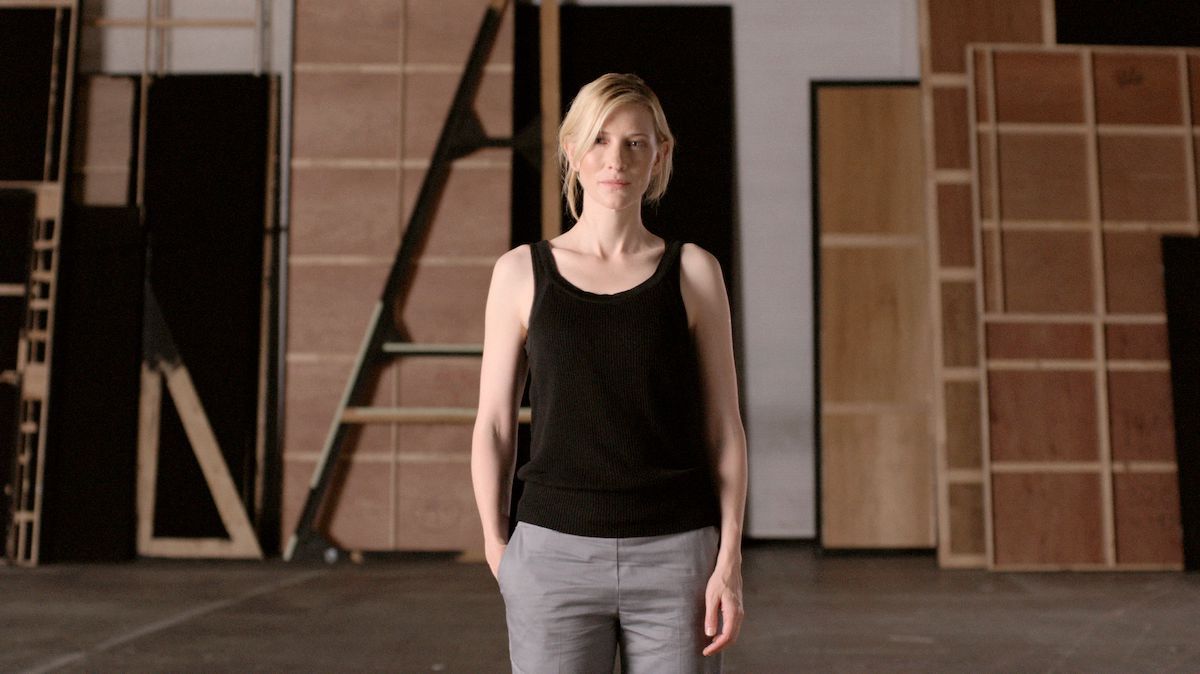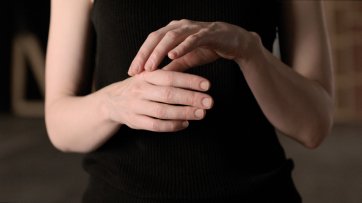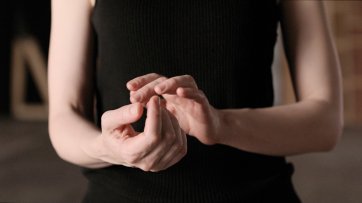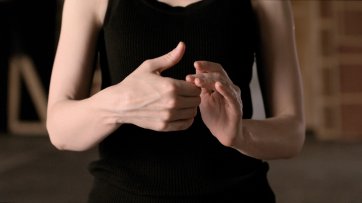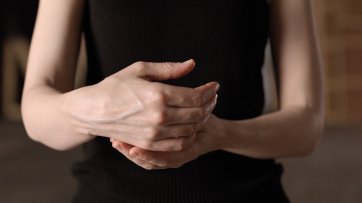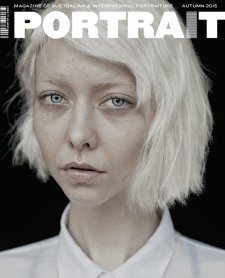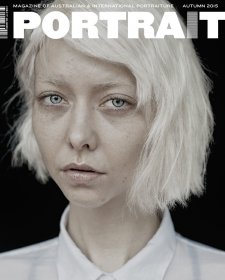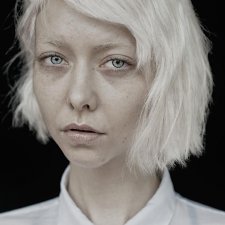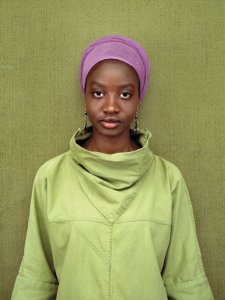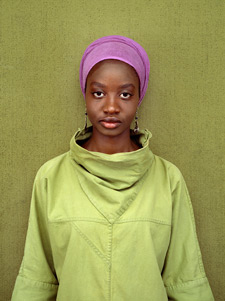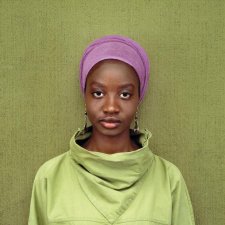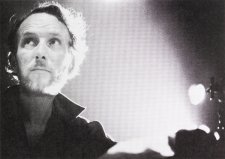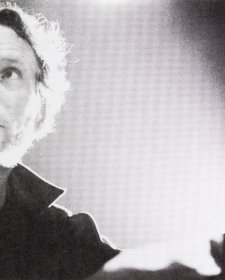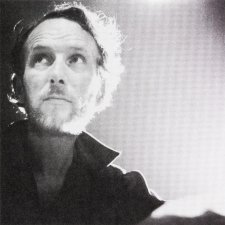After thirty years of professional acting and fourteen years teaching at the National Institute of Dramatic Art (NIDA) I was naturally drawn to the video portrait of Cate Blanchett by David Rosetzky commissioned by the National Portrait Gallery in 2008.
As I first viewed the digital portrait I remember thinking that every acting student must watch this early in their training program.
Cate Blanchett is one of Australia’s best known, most luminous and honoured actors. What might her digital portrait tell us about the art of acting? As my colleague, Dr Christopher Chapman, has described, ‘Rosetzky’s video portrait depicts Cate Blanchett performing simple movements, gestures and a dance sequence choreographed by Lucy Guerin within a set that refers to the contexts of film and theatre.’ Blanchett speaks in voiceover describing her working methods and approaches to character, focussing on her relationship to performance and transformation. Rosetzky’s portrait seems to me to be a work that explores an actor’s process.
The video begins in close up on the actor’s hands; those instruments capable of an infinite variety of communicative gestures in our day to day interactions and amplified significantly on stage or screen. One hand controls the other through a circular sequence of isolations – turning the wrist downward, opening the palm slightly, curling the fingers, opening the palm – repeat. The series of manipulated hand movements allows us to observe how deliberate placement and articulation opens up the potential expressiveness of controlled gesture at the actor’s command. An actor selects consciously from the myriad of gestures which we perform unconsciously every day.
The filmed portrait next focusses on a head shot of Blanchett looking directly at her audience for several seconds before the shot fades out as a camera lens is changed – a reference to the technical aspects of film making. The director’s presence becomes apparent as our gaze is subjected to editing which intervenes and directs our relationship to the actor.
With the camera shifting to a close up of Blanchett’s upper body, we watch as she moves a simple chair in a large warehouse space and sits looking directly at us.
Her expression is neutral, ‘You’ve got to get to a place of neutrality. It’s like a neutral mask that doesn’t betray any emotion.’ One of the first phases in actor training aims to guide the developing actor to achieve a kind of neutrality in which personal tics and mannerisms will not intrude as the actor progresses toward a transformation into character. Early in the first year of actor training during my time at NIDA, students were filmed entering a room, taking a seat, saying their name, standing and exiting. In watching the individual films it was fascinating to observe the multiple minute permutations and tiny give-away physical and expressive details which intrude on our simplest actions, how much we reveal of ourselves in our simplest gestures. Towards the end of training the process was filmed again. If the actor achieves something near neutrality, the layering of character can begin: a posture, characteristic gestures, rhythms, centre of gravity can be assumed as the actor transforms from self to other. The sequence with the chair in Rosetzky’s video portrait of Blanchett is reminiscent of NIDA training under the movement master, Keith Bain, with whom Cate studied. ‘Speaking personally, there is no doubt that Keith was and is the biggest single influence on my work as an actor.’ (Introduction by Blanchett to Keith Bain on Movement, Currency House).
The following sequence shows Blanchett, apparently casually, donning layer after layer of mismatched items of clothing. At points she freezes, mid movement, indicating a fresh image, a heightened perspective, a hint or foreshadowing of what might follow. With each item of clothing, a new persona emerges, ‘Who I am is constantly shifting’. This sequence most obviously reflects Rosetsky’s stated aim, ‘I didn’t want to present the portrait as a definitive representation of Cate Blanchett – but rather an exploration of shifting identities and inter-changeability.’ The layering completed, Blanchett lies on the studio floor, eyes open, and hands on her belly. She stays prone, thinking and dreaming. She reflects on the characters she has developed for performance saying, ‘I do see them as people, but they’re not completely formed, in the way that you can dream about a person but when you wake from the dream; they’re shadowy, more of an essence.’
Finally, Blanchett disrobes and returns the garments to the chair. She clears the space by removing the chair, the shot widens and reveals the cavernous bare studio with scenery flats and properties stored – the bowels of the theatre. The space has been prepared for physical work. Lucy Guerin choreographed the playful movement sequence, neither dance nor natural movement, which typifies sequences learnt in actor training. Each isolation of a part of the body; each flick of the hand, roll of the shoulder, or turn of the head signifies a new possibility for the actor. Central to such training is the mindful exploration of the body in space and the expressive possibilities of simple movement. The actor focusses on the emotional and intellectual sources of energy production and the differing, subtle impulses compelling movement. The actor aims for specificity and economy.
Guerin’s work is committed to an exploration of the everyday and a redefinition of the formal concerns of dance. There is a clear synergy between Guerin’s choreographed sequence and the work of Keith Bain with actors which form a core part of Blanchett’s mature technique. Of Bain, Blanchett writes, ‘His teachings are the foundation of my technique. His suggestions are my notes to self and his deep generosity and passion are a true inspiration, and always the last thought to cross my mind before walking on stage or before ‘action’ is called is Keith’s exquisite metaphor, “to turn my headlights on”’.
This commissioned work explores the neutral mask, the layering of character, the work of dreaming and imagining, and studied expressive movement and gesture. It is accompanied by Blanchett’s voice over edited from transcripts of conversations with Rosetzky about her working methods. In structure, the portrait replicates an actor’s process in developing a character early in rehearsals.
The core message I read in the portrait is that great acting demands a kind of death of the self. The shape changing, androgynous ancient Athenian god of theatre, Dionysus, was a god of altered states, of actor to character, of sobriety to inebriation, and of life to death. The actor attempts to sublimate self to character but paradoxically, in so doing, reveals aspects of themselves in the imagined situation and circumstance of the character.
Blanchett speaks of ‘making the mask transparent’, the ‘constant pull between wanting to be seen and not wanting to be seen’. Despite taking on the mask of the character, the actor’s job is to reveal rather than conceal. There is a tension between the neutralising of identity and a revelation of aspects of the self in the best acting which this portrait explores.
Although this portrait’s stated focus is the transformation of the actor’s self to other, rather than a revelation of Cate Blanchett’s personal identity, paradoxically we see her clearly through the transparent mask.
